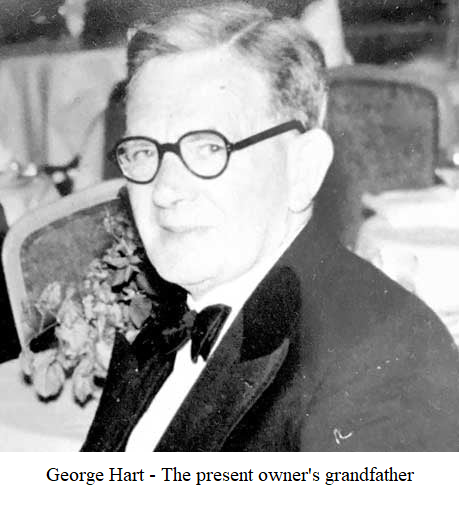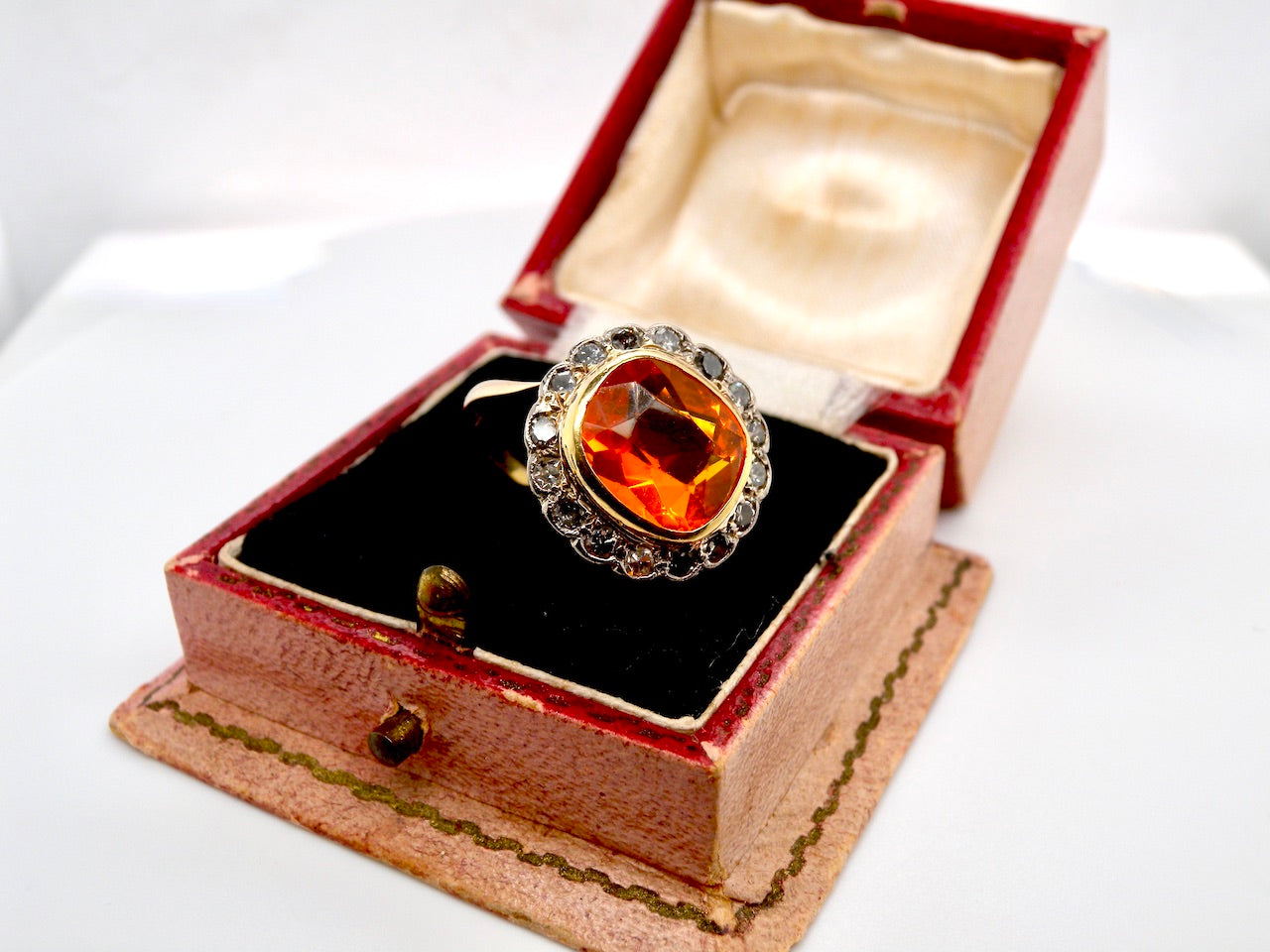The first cluster ring I really fell for wasn’t the biggest or the flashiest. It was a late-Victorian piece: a compact circle of old-cut diamonds with a gentle dome to it. Under softer light the stones flickered like a handful of tiny flames. It didn’t shout. It glowed. When a customer tried it on, her whole expression changed “It feels alive,” she said. That reaction is what cluster rings do best.
A diamond cluster ring groups several smaller diamonds to create one larger impression of light. It’s a smart idea visually generous, more pocket-friendly than a single stone of the same face-up size, and full of character. And because clusters have been made across so many eras, from Georgian right through Art Deco and beyond, there’s a style to suit almost anyone.
What a Cluster Ring Really Is (and Why They Work)
In a good cluster, the diamonds sit close bead-set or claw-set so the gaps almost disappear. Your eye blends the stones together, so you see one brilliant field of light rather than separate points. Jewellers have known this trick for centuries. Long before modern cutting and huge single stones were common, clusters delivered glamour under candlelight and gaslight.
Two small details often separate an average cluster from a memorable one:
• Profile: Many antique clusters have a slight crown or “dome.” That height lets angled facets catch light from different directions, which makes the ring look lively as the hand moves.
• Rhythm: Old cuts (old mine, old European, single-cut accents) throw broader flashes of light than modern brilliants. The sparkle is gentler, more romantic. Customers often describe it as a glow rather than a glitter.

The cluster design allows for a larger overall diamond appearance without the cost associated with a single large diamond.
These rings are often crafted with various diamond shapes, such as round, princess, or marquise, which adds to their versatility and appeal. The cluster setting also provides a beautiful and intricate look, making it a popular choice for engagement rings or special occasion jewellery.
Clusters Across the Eras (seen from the bench)
• Georgian beginnings (18th–early 19th century) Closed-back settings and silver-topped gold were common. Diamonds sat in rounded, hand-built mounts that feel almost organic. When we handle these, we always point out the soft, candlelit character they were made for evenings, not LEDs.
• Victorian favourites (1837–1901) The classic round or floral cluster really comes into its own. You’ll see tight pavé and small claw settings, sometimes with a slightly raised centre stone. These pieces are wonderfully wearable compact, bright, sentimental.
• Edwardian refinement (1901–1915) Platinum arrives, and with it lace-like settings. The metal is strong yet fine, so the diamonds look as if they’re floating. Some of the prettiest “daisy” clusters we’ve sold were Edwardian airy, elegant, and surprisingly resilient.
• Art Deco geometry (1920s–1930s) The shapes sharpen. Clusters go square, hexagonal, target-style, or even stepped. You’ll often see calibre-cut accents and early brilliants. Deco clusters feel bolder on the hand, and they remain extremely popular with collectors.
Each era leaves a fingerprint. Part of the pleasure, for us, is helping a customer recognise those small, era-specific clues: the beadwork, the cut style, the way the shoulders taper. You start to “read” the ring as well as admire it.
Why People Choose Clusters Today
-
Face-up presence without the single-stone price
A well-made cluster can read like a larger diamond on the finger, because the eye blends the stones. If budget is a factor (and it often is), clusters are a clever way to get impact. -
Character and individuality
Antique clusters aren’t stamped out by machine. Tiny tool marks, older cuts, hand-drawn symmetry these give the ring its personality. We hear “it looks like nothing else I’ve seen” almost weekly. -
Versatility
Small round clusters feel delicate for everyday wear; Deco hexagons have attitude; Edwardian daisies are pure grace. There isn’t one “cluster look.” -
Sustainable by nature
Choosing an antique ring is the quietest form of recycling. No new mining. No new manufacturing. The ring has already proved it can last.
What We Look For (and what we tell customers at the counter)
• Cut and match. The diamonds don’t need to be identical older rings rarely are but they should belong together. When the cuts are in harmony, the ring twinkles evenly.
• Proportions Good clusters are balanced: enough centre height to catch light, enough border to frame it. When proportions are off, a cluster can look flat. When they’re right, the ring wakes up on the hand.
• Setting integrity. We always check beads, claws, and the edge (the “millegrain” on some Edwardian pieces). A tidy edge does more for the look than people expect.
• Shank condition and sizing room Antique shanks are sometimes thin from decades of wear. We’ll advise on reinforcing before you size, so daily use is safe.
Common Questions We’re Asked
Q: Do clusters look “old-fashioned”?
Not in the least. A neat Victorian or Edwardian daisy looks timeless with a white shirt. Deco geometry reads modern even now. If anything, clusters feel refreshingly individual compared with rows of near-identical solitaires.
Q: Are the small diamonds lower quality?
Not automatically. In antique pieces, the small stones (“melee”) were often well-selected to match the centre’s character. They may show different facet patterns from modern stones, but that’s part of the charm.
Q: Daily wear or special occasions only?
Plenty of people wear them daily. We recommend a yearly check on claws and beads, and a little care with snag-prone knits. Remove for heavy DIY and the gym common-sense stuff.
Q: What’s the difference between a cluster and a halo?
Q: Cleaning tips?
Warm water, a drop of mild soap, and a soft brush. Rinse well. Ultrasonic cleaners can be a risk for older bead-set mounts or foiled-back stones, so we clean those by hand.
Q: Resizing concerns?
Most can be sized sensibly. We check where the join will sit, whether the shank needs strengthening, and keep heat away from sensitive settings.
A solitaire gives you one point of focus. Every millimetre of the diamond matters, and price jumps with carat weight. A cluster distributes budget across many stones, trading “one big flash” for a field of light. On the hand, many people prefer the liveliness of a cluster. There’s no right answer just personal taste, finger shape, and how you like a ring to sit. We’ve had customers come in thinking “solitaire, definitely,” and leave with a Victorian daisy because it simply looked happier on their hand. That’s the only test that really counts.
A Note on Value
Because clusters are made of several smaller stones, they can be far more approachable than a single diamond of the same face-up size. Antique clusters with good cuts, original settings, and tidy edges hold demand well. The pieces that do best over time tend to be the ones with clear period character and honest condition the ring that looks like what it is, not a modern copy.
Final Thoughts
Diamond cluster rings manage a neat trick: presence, history, and personality without losing practicality. They’ve lived through fashions and lighting changes and still know how to catch the eye. If you’re exploring rings and want something with a story something that feels yours the moment you put it on a cluster is worth trying in person. The right one has a way of announcing itself.
If you’d like to see examples, have a look through our Diamond Cluster Ring Collection and if a piece sparks a question, just ask. We’re happy to check settings, advise on sizing, and help you choose a ring you’ll enjoy every day.
You May Also Like: The Unique Style of Art Deco Jewellery



